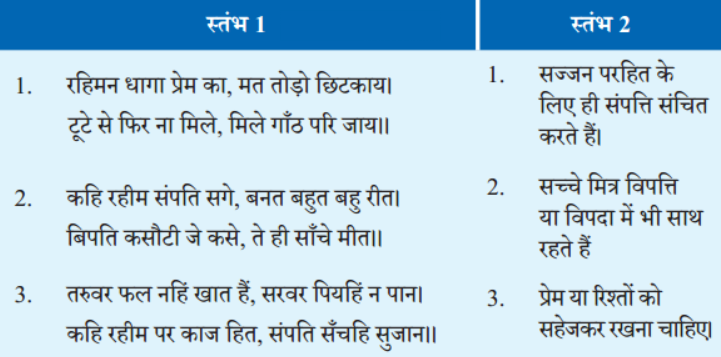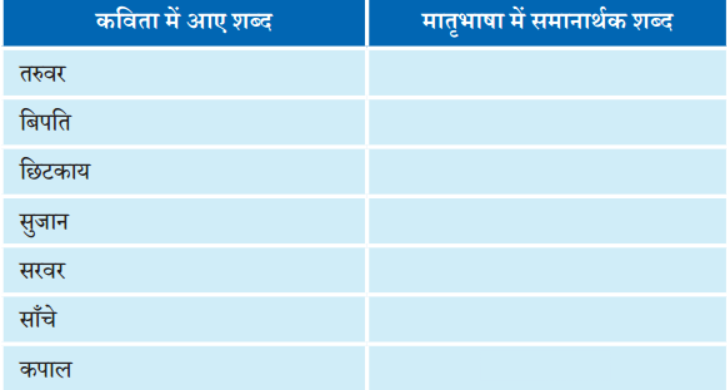Rahim Ke Dohe Class 6 NCERT Solutions For Easy Exam Preparation
FAQs on NCERT Solutions For Class 6 Hindi Chapter 5 Rahim Ke Dohe
1. Who is the poet of the poem Rahim Ke Dohe?
Abdul Rahim Khan-i-Khana, commonly known as Rahim, is the poet of Rahim Ke Dohe. He was a famous Hindi poet and courtier during the Mughal emperor Akbar's reign in the 16th century. His dohas (couplets) are renowned for their moral teachings and life wisdom that remain relevant even today.
2. What is the moral of Rahim Ke Dohe?
The moral of Rahim Ke Dohe teaches students about kindness, helping others, and the importance of good character in life. Each doha in this chapter carries valuable life lessons about human behavior, relationships, and ethical conduct that students can apply in their daily lives.
3. How can students access Rahim ke Dohe Class 6 NCERT Solutions effectively?
NCERT Solutions for Rahim ke Dohe provide comprehensive explanations of each doha with detailed meanings, moral lessons, and question-answer formats that help students understand the chapter thoroughly. These solutions break down complex Hindi poetry into simple, understandable language suitable for Class 6 students.
Proper solutions help students grasp the deeper meanings behind Rahim's dohas and prepare effectively for examinations while developing appreciation for Hindi literature.
4. What are the key question-answer topics covered in Rahim ke Dohe Class 6?
The key question-answer topics include explaining the meaning of each doha, identifying the moral lessons, understanding difficult Hindi words, and connecting the teachings to real-life situations. Students encounter questions about the poet's background, the central theme, and practical applications of the wisdom shared.
These varied question types help students develop comprehensive understanding of both the language and philosophical aspects of the chapter.
5. How to understand the difficult words in Rahim ke Dohe Class 6 chapter?
Students can understand difficult Hindi words in Rahim ke Dohe by using the glossary provided in NCERT textbooks, breaking words into smaller parts, and learning their contextual meanings within each doha. The chapter contains several traditional Hindi terms that require careful explanation for modern students.
Understanding vocabulary is crucial for grasping the complete meaning and appreciating the beauty of Rahim's poetic expression.
6. What study approach works best for Class 6 Hindi Chapter 5 preparation?
The best study approach combines reading each doha aloud, understanding its literal and deeper meanings, memorizing key verses, and practicing question-answers regularly. Students should focus on both language skills and moral comprehension to master this poetry chapter effectively.
A systematic approach ensures students don't just memorize content but truly understand and appreciate Rahim's wisdom and poetic skills.
7. How does the NCERT PDF help students learn Rahim ke Dohe better?
The NCERT PDF provides structured explanations, word meanings, moral interpretations, and practice questions that make Rahim ke Dohe accessible and understandable for Class 6 students. It includes detailed commentary on each doha with cultural context and practical applications of the lessons taught.
8. What makes Rahim ke Dohe Class 6 chapter important for students?
Rahim ke Dohe chapter is important because it introduces students to Hindi poetry, moral values, and cultural wisdom through simple yet profound two-line verses that teach life lessons. This chapter helps develop both language appreciation and character building in young learners.
Early exposure to moral poetry helps students develop ethical thinking, cultural awareness, and appreciation for Hindi literature's richness.

























